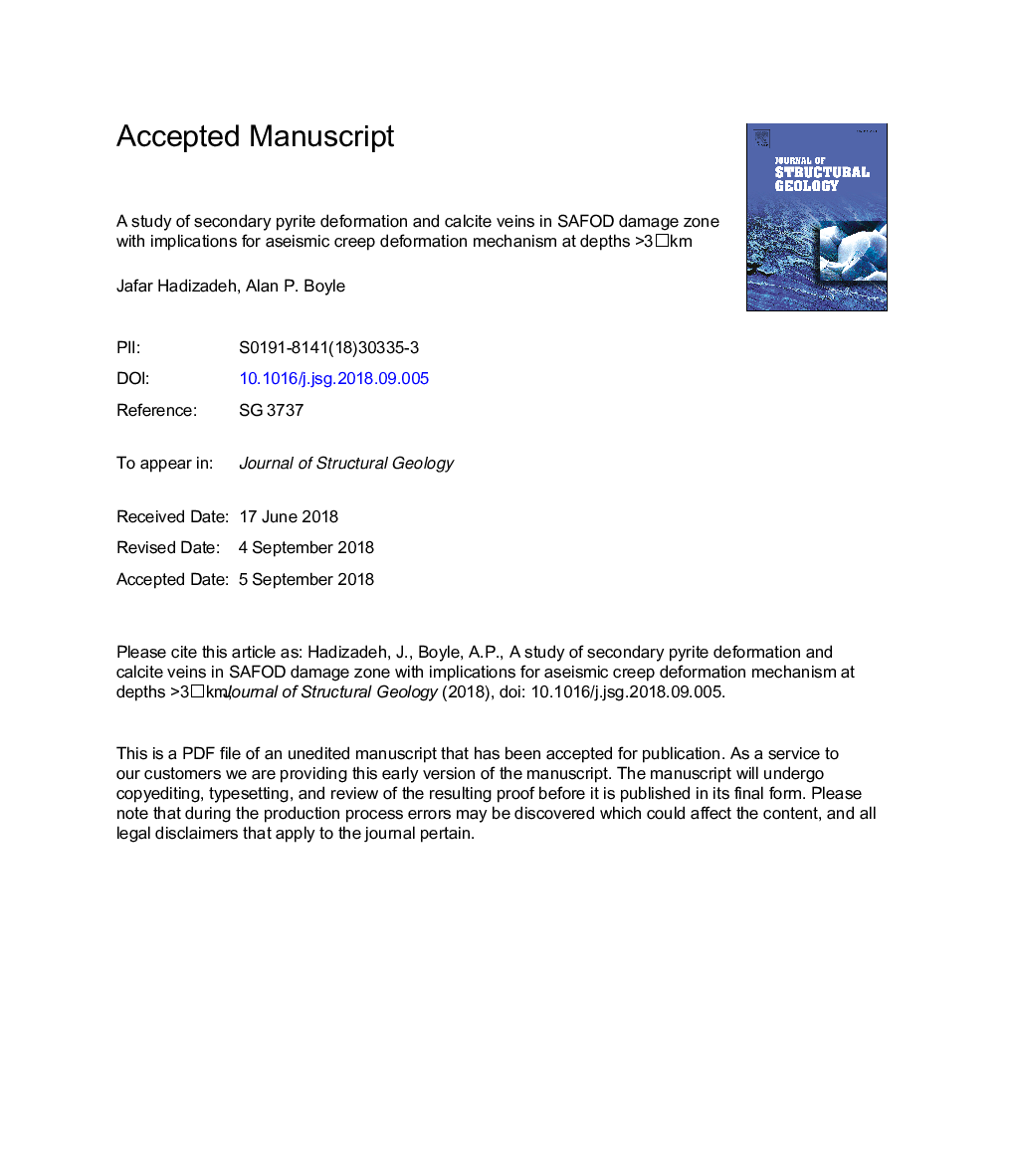| Article ID | Journal | Published Year | Pages | File Type |
|---|---|---|---|---|
| 10224384 | Journal of Structural Geology | 2018 | 43 Pages |
Abstract
Previous studies of the San Andreas Fault damage-zone samples from the San Andreas Fault Observatory at Depth (SAFOD) have identified a variety of tectonic microstructures including pressure solution cleavage, calcite-sealed fractures vein fabric, and pyrite and anhydrite hydrothermal fracture sealing. Understanding the deformation provenance of the damage zone rocks and operative deformation mechanism(s) based on preserved microstructures provide insight into overall deformation behavior of the entire seismogenic zone in the creeping section of this transform fault. We analysed the deformation of hydrothermal secondary pyrite in connection with network of calcite veins in a sample of foliated ultracataclasites bordering the actively creeping Southwestern Deforming Zone (SDZ), using SEM, EBSD and CL microscopy. The results show that calcite veins associated with the pressure solution cleavage are crosscut by the secondary pyrite deformed under a range of P-T conditions. Relatively undeformed secondary pyrite is found sealing implosion microbreccia. Our review of previously available data indicates that the damage zone rocks may represent a collage of structural and compositional domains from both locked and creeping sections of the SAF. This interpretation together with results of this study suggest that weak-clay frictional deformation mechanism(s) is likely to be the predominant aseismic creep mechanism at depths below the SAFOD.
Keywords
Related Topics
Physical Sciences and Engineering
Earth and Planetary Sciences
Geology
Authors
Jafar Hadizadeh, Alan P. Boyle,
